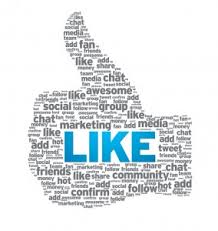It’s incredible to think about how many different ways of communication and engagement there are today. From Facebook, to e-mail, Skype, Twitter, text messages, Tumblr, LinkedIn, WhatsApp, the options seem endless.
For non-profit organizations aiming to raise awareness and/or funds for their cause, a combination of traditional and modern communications technologies can give you an incredible advantage as there is the ability to easily share your organization’s message with donors.
But as so many other aspects of life in today’s world, there is the tendency to quickly adopt these impressive technological developments without truly considering the pros and cons of each mode of communication. Today, too many non-profits are trying to reach all their donors through every possible channel of communication. As a result of this constant contact, NGOs risk being completely ignored by frustrated donors.
What needs to happen, in order for NGOs to improve the donor journey, lies in the development of new strategies/practices to optimize donor communication. Non-profit organizations must find methods to engage in a meaningful way with donors and supporters.
Here’s how you can improve the donor journey and optimize donor communication:
1. Ask donors the best way to communicate with them.
Ask your donors themselves! Most non-profits spend too much of their time and energy contacting donors through every medium possible. But, in many cases, a donor may not want to be called or may not want to be contacted via Twitter. Just because someone has made a donation to your organization it does not mean they want to be in contact with the organization through multiple channels.
So how can your non-profit avoid this issue? Simple. Ask each donor how he or she would like your organization to communicate with him or her. Once you get a reply about your donor’s preference for communication, record it in a comprehensive donor management system to ensure all future communication respects these preferences.
This approach will build trust with donors and increase the probability that your communications will be read and better received.
2. Select a method that works best with your audience.
After you have established the communications preference of your donors, your organization should dedicate some time to consider the most effective methods to reach them and make an impact.
For example, if your main demographic is millenials, Facebook or email are more likely to be an effective tool than with an older generation. Your donor management system should be programed to track demographic information, so you can identify which preferred methods of communication by that donor would be the most fruitful.
3. Record past communication.
In your donor management system, you need to keep track of all past communication with your donors. By recording all contact, you store relevant information in order to communicate the perfect message to each individual donor. This gets your organization one step closer to building a strong and trusting relationship with the donor.
It’s true that a sophisticated donor management system costs money, but if you look at the big picture, you may find it will be absolutely worth it in the end. To create meaningful relationships with donors is the most important aspect of all, and a management system will help you to do this.






